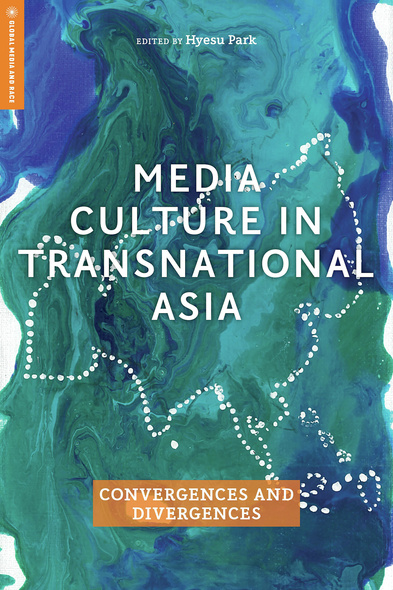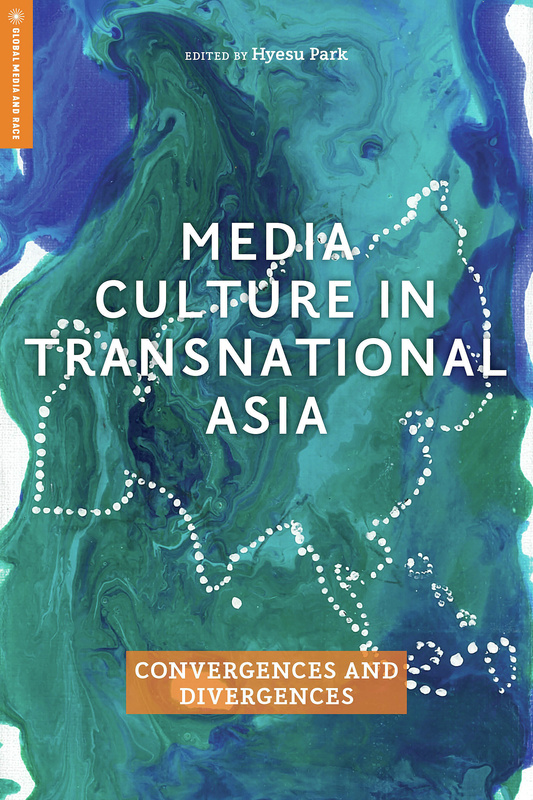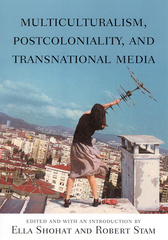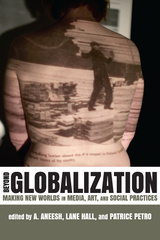Media Culture in Transnational Asia
Convergences and Divergences
Edited by Hyesu Park
SERIES:
Global Media and Race
Rutgers University Press
Media Culture in Transnational Asia: Convergences and Divergences examines contemporary media use within Asia, where over half of the world’s population resides. The book addresses media use and practices by looking at the transnational exchanges of ideas, narratives, images, techniques, and values and how they influence media consumption and production throughout Asia, including Sri Lanka, Bangladesh, South Korea, Singapore, Vietnam, Afghanistan, Iran and many others. The book’s contributors are especially interested in investigating media and their intersections with narrative, medium, technologies, and culture through the lenses that are particularly Asian by turning to Asian sociopolitical and cultural milieus as the meaningful interpretive framework to understand media. This timely and cutting-edge research is essential reading for those interested in transnational and global media studies.
Media Culture in Transnational Asia is one of the most informative books on Asian cultural studies, examining the dynamics of the local and global forces in the trans-Asian mediascape from a local or Asian point of view. With its focus on the production and circulation of media products, old and new, both within and across national borders, this edition rewards its readership with a rich, productive dialogue among different nations, regions, and perspectives that sounds the possibilities of a rising new pan-Asian community.
Global and glocal, pan-Asian or trans-Asian, from radio to mukbang, this pithy volume presents a provocative collection of scholarship that interrogates transnational media culture in Asia—a region that is steeped in tradition yet burgeoning in exciting new ways. Media Culture in Transnational Asia is a timely and valuable contribution to media studies and Asian studies.'
Latinx Pop Lab podcast interview with HyeSu Park
https://www.youtube.com/watch?v=-1y_8qPcvA0feature=youtu.be
HYESU PARK is an assistant professor of English at Bellevue College in Bellevue, Washington. Her articles have appeared in Image and Narrative, Studies in Twentieth and Twenty-First Century Literature, and American Book Review.
Introduction
Hyesu Park and Maya Dodd
Part I: Transnational Approach
Chapter 1: Converging on Love and Indifference: Mediated Otherness in South and East
Asia
Rea Amit
Chapter 2: The Child Bride: Unpacking the Popularity of the Indian Television Show Balika Vadhu in Vietnam
Shubhda Arora and Juhi Jotwani
Chapter 3: Star Construction in the Era of Media Convergence: Pro-Am Online Videos, Co-creative Culture, and Transnational Chinese Icons on YouTube
Dorothy Wai Sim Lau
Chapter 4: Screen to Screen: Adaptation and Transnational Circulation
of Chinese (Web) Novels for Television
W. Michelle Wang
Chapter 5: Rhetorical Liminality in Southeast Asian Media Representations of Human Trafficking
John Gagnon
Chapter 6: Addressing Transnational Legacies of Colonialism in East Asia: Cases from Contemporary Japanese Art
Hiroki Yamamoto
Part II: Single-nation Approach
Chapter 7: Media, Narrative, and Culture: Narrativizing and Contextualizing Korean Mukbang Shows
Hyesu Park
Chapter 8: Construction, Consumption, and Representation of White Supremacy in Sri Lankan Advertisements: Living White While Being Non-White
Asantha U. Attanayake
Chapter 9: A Liminal Bengali Identity: Film Culture in Bangladesh
Sabiha Huq
Chapter 10: Screening Southeast Asia: Film, Politics, and the Emergence of the Nation in Post-War Southeast Asia
Darlene Machell de Leon Espena
Chapter 11: Afghan Media and Culture in Transition
Alireza Dehghan
Chapter 12: A Semiotic Analysis of Symbolic Actions of Iranian Instagram Users
Hamid Abdollahyan and Hoornaz Keshavarzia
Acknowledgments
Bibliography
Notes on Contributors
Index
Hyesu Park and Maya Dodd
Part I: Transnational Approach
Chapter 1: Converging on Love and Indifference: Mediated Otherness in South and East
Asia
Rea Amit
Chapter 2: The Child Bride: Unpacking the Popularity of the Indian Television Show Balika Vadhu in Vietnam
Shubhda Arora and Juhi Jotwani
Chapter 3: Star Construction in the Era of Media Convergence: Pro-Am Online Videos, Co-creative Culture, and Transnational Chinese Icons on YouTube
Dorothy Wai Sim Lau
Chapter 4: Screen to Screen: Adaptation and Transnational Circulation
of Chinese (Web) Novels for Television
W. Michelle Wang
Chapter 5: Rhetorical Liminality in Southeast Asian Media Representations of Human Trafficking
John Gagnon
Chapter 6: Addressing Transnational Legacies of Colonialism in East Asia: Cases from Contemporary Japanese Art
Hiroki Yamamoto
Part II: Single-nation Approach
Chapter 7: Media, Narrative, and Culture: Narrativizing and Contextualizing Korean Mukbang Shows
Hyesu Park
Chapter 8: Construction, Consumption, and Representation of White Supremacy in Sri Lankan Advertisements: Living White While Being Non-White
Asantha U. Attanayake
Chapter 9: A Liminal Bengali Identity: Film Culture in Bangladesh
Sabiha Huq
Chapter 10: Screening Southeast Asia: Film, Politics, and the Emergence of the Nation in Post-War Southeast Asia
Darlene Machell de Leon Espena
Chapter 11: Afghan Media and Culture in Transition
Alireza Dehghan
Chapter 12: A Semiotic Analysis of Symbolic Actions of Iranian Instagram Users
Hamid Abdollahyan and Hoornaz Keshavarzia
Acknowledgments
Bibliography
Notes on Contributors
Index










